

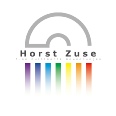


Z3
Today it is undisputed that Konrad Zuse's Z3 was the first fully functional, program controlled (freely programmable) computer of the world. The Mark II, the ENIAC and the Colossus followed 1943 and later. The Z3 was presented on May 12, 1941 to an audience of scientists in Berlin. The demonstration was a success.
Who was Konrad Zuse? Professor Dr. Friedrich L. Bauer writes:
Konrad Zuse was the creator of the first full automatic, programm controlled and freely programmable, in binary floating point arithmetic working computer. The Z3 was finished in 1941.
The Z3 as the Z1 contained practically almost all features of modern day computers. The Z3 was built with relays. The Z3 did not have a jump instruction. Konrad Zuse, however, did know the jump instruction, as he implemented it in the micro code for floating point calculations.
No picture of the original Z3 exists. The picture at the right side was taken from a reconstruction made in early 1960 by Zuse KG, Bad Hersfeld. The reconstruction was made for the 1964 Interdata industry fair in Munich. In 1967, it was on display at the Montreal Expo, where it received great attention. It is now owned by the Deutsche Museum in Munich.
The right cupboard contains the relays for the arithmetic unit. Also the relays on
the top of the left cupboard belong to the arithmetic unit. The relays in the left
cupboard with the light color belong to the memory (64 words a 22 bits). On the bottom
of the right cupboard the micro sequencers can be seen, which are the heart of the
control unit of the Z3. The micro sequencers are realized with stepwise relays. They
are used to reduce complicated arithmetic operations to additions or subtractions.
The input-
The block structure of the Z3. There is a separation of the components of the machine,
like the control unit, the memory, the arithmetic unit, and the input-
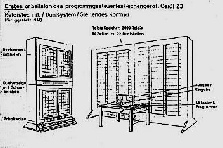
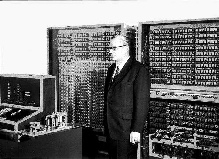
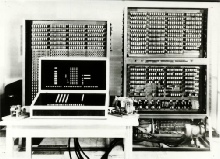
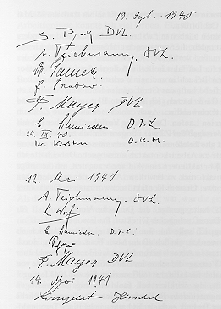
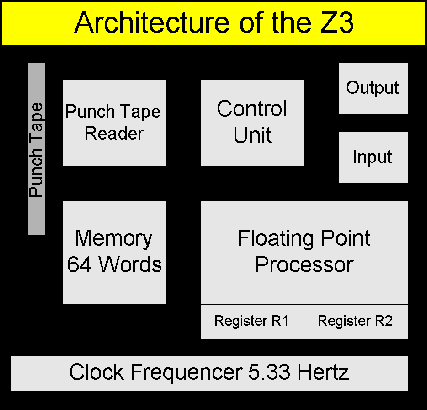
Presentation of the fully operative Z3.
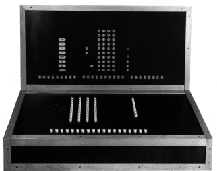
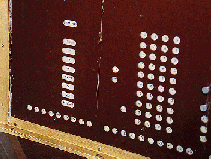
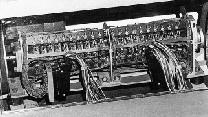
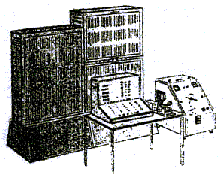
Goto the Z4...

| Zuse-Apparatebau |
| Zuse 1936-1949 |
| Zuse KG (1949-1964) |
| Zuse KG - Computer |
| Z1 |
| Z1- Metal Sheets |
| Z2 |
| Z3 |
| Z4 |
| S1 |
| Z5 |
| Z11 |
| Z22 |
| Z23 |
| Z31 |
| Z64 |
| Z25 |